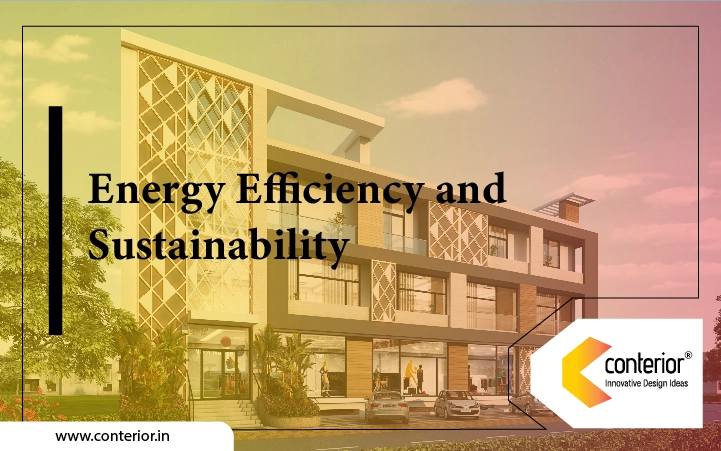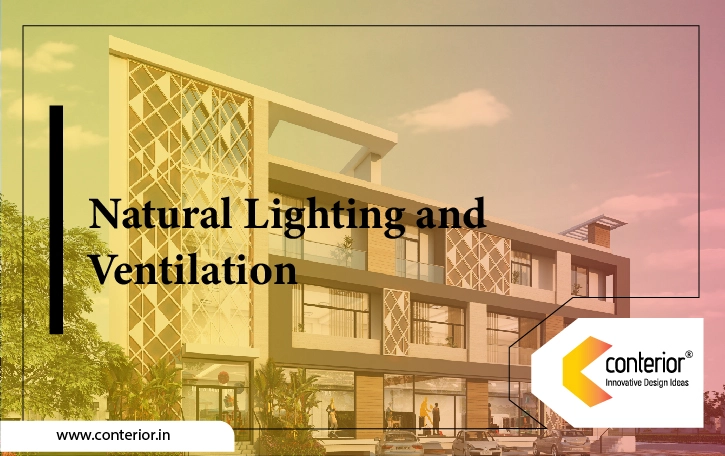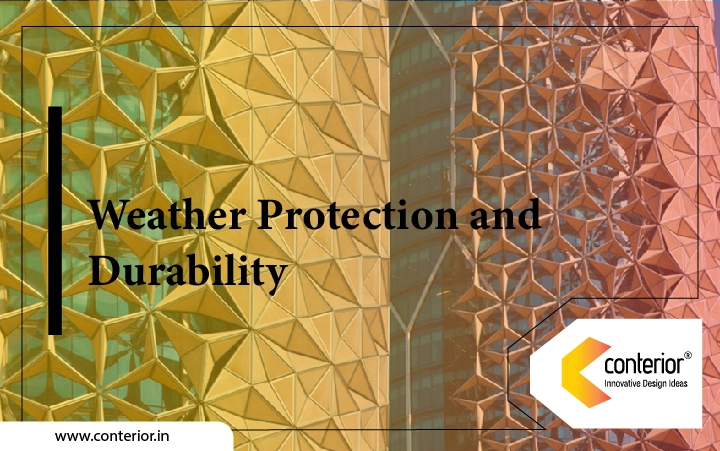In the realm of architecture, facade designs hold a pivotal role in defining the visual appeal and functionality of buildings. By seamlessly blending artistic vision with practical considerations, facade designs offer a multitude of benefits that extend far beyond their superficial appearance. A facade, essentially the outer face or frontage of a building, serves as a crucial link between the internal spaces and the external environment. The concept of facade design encompasses both the aesthetic and functional aspects of a building’s exterior. It involves the thoughtful arrangement of materials, textures, patterns, and architectural elements to create an impactful and harmonious visual impression.
This article explores the multifaceted advantages of facade designs, highlighting their potential to elevate architectural marvels to new heights. From enhancing the building’s curb appeal and reflecting the purpose or identity of a structure to improving insulation, facilitating natural lighting, and optimizing energy consumption, facade designs contribute to a holistic and sustainable built environment.
What is Facade Design?
Facade design is an architectural concept that refers to the exterior appearance and aesthetic of a building. It involves the deliberate arrangement of elements such as materials, colors, textures, and patterns to create a visually appealing and functional outer surface.
The Benefits of Facade Designs
The main benefits of Facade Design are:

1. Aesthetics and Visual Appeal
One of the key Benefits of Facade Designs is the enhancement of aesthetics and visual appeal. Facade design refers to the process of creating the exterior appearance of a building or structure. By incorporating creative and well-thought-out facade designs, architects and designers can significantly improve the overall look and feel of a building, making it visually stunning and captivating. Facade designs play a crucial role in shaping the first impression of a building. With carefully chosen materials, textures, colors, and patterns, a well-executed facade design can instantly grab attention and leave a lasting impression on observers. It adds an element of uniqueness and individuality to the structure, making it stand out in its surroundings.
A thoughtfully designed facade can transform an ordinary building into an architectural masterpiece. It allows architects to express their creativity and showcase their design skills. By incorporating innovative and striking facade designs, architects can create buildings that become landmarks, attracting tourists and admirers. Moreover, facade designs contribute to the overall character and identity of a building. They can help communicate the purpose, values, or branding of an organization or institution. For example, a modern, sleek facade design might convey a sense of innovation and progressiveness, while a traditional or ornate design might evoke a sense of heritage and history.

2. Energy Efficiency and Sustainability
One of the primary Benefits of Facade Designs is energy efficiency. A well-designed facade can significantly reduce a building’s energy consumption by controlling heat gain and loss. By incorporating insulation materials, shading devices, and optimized glazing systems, facade designs can enhance thermal performance and reduce the need for excessive heating or cooling. Sustainability is another key advantage of facade designs. The integration of sustainable materials and technologies in the facade can contribute to a building’s overall sustainability goals. For instance, the use of renewable energy sources such as solar panels integrated into the facade can generate clean electricity, reducing reliance on traditional energy grids. Additionally, facade designs can incorporate rainwater harvesting systems, green walls, or vertical gardens, promoting water conservation and improving air quality.
Facade designs also play a significant role in enhancing indoor comfort. By implementing effective ventilation strategies, such as natural ventilation systems or adjustable louvers, facade designs can improve air quality and ensure a healthy indoor environment. Natural lighting is another aspect that facade designs can optimize, allowing for ample daylight penetration and reducing the need for artificial lighting during the day. This not only creates a pleasant indoor atmosphere but also reduces electricity consumption.

3. Natural Lighting and Ventilation
Natural lighting is a key element of a well-designed facade. Incorporating ample glazing and transparent materials into the facade allows sunlight to penetrate the building’s interior. This not only enhances the visual appeal but also offers several advantages. Natural light creates a pleasant and inviting environment, positively influencing the occupants’ mood, productivity, and overall well-being. It reduces the reliance on artificial lighting during the day, thus saving energy and reducing electricity costs. Additionally, natural light provides a more accurate representation of colors, making spaces appear more vibrant and aesthetically pleasing. Ventilation is another crucial aspect of facade design. Proper ventilation ensures the continuous flow of fresh air, creating a healthier and more comfortable indoor environment.
Facades can incorporate various strategies to facilitate natural ventilation, such as operable windows, louvers, and vents. These elements allow the controlled intake and exhaust of air, promoting air circulation and preventing the accumulation of stale or polluted air. Natural ventilation helps maintain optimal indoor air quality, reduces the risk of moisture-related issues like mold growth, and contributes to energy efficiency by reducing the need for mechanical ventilation systems. The integration of natural lighting and ventilation into facade design patterns further amplifies the benefits. Facade design patterns refer to the systematic arrangement of elements on the building’s exterior to achieve specific aesthetic, functional, and performance objectives. By incorporating facade design patterns that prioritize natural lighting and ventilation, architects can create buildings that are not only visually appealing but also sustainable, energy-efficient, and conducive to occupant comfort.

4. Weather Protection and Durability
One of the significant Benefits of Facade Designs is the provision of weather protection and durability. Facades serve as the outer layer of a building, shielding it from harsh environmental conditions such as rain, wind, snow, and extreme temperatures. Through thoughtful facade design, architects and engineers can create a barrier that prevents water infiltration, minimizes heat loss or gain, and protects the structural integrity of the building. A well-designed facade acts as a protective shield, safeguarding the interior spaces from moisture, humidity, and other weather-related damage.
By effectively managing water runoff and preventing moisture accumulation, facade designs contribute to the longevity of the building’s materials and reduce the risk of deterioration, rot, or mold growth. This, in turn, enhances the overall durability and lifespan of the structure. Furthermore, facade designs can incorporate weather-resistant materials and construction techniques, ensuring that the building can withstand the test of time. Utilizing robust materials like weatherproof cladding, insulated glass panels, or composite systems enhances the resistance of the facade against external elements. Such durability not only adds value to the building but also reduces maintenance and repair costs in the long run.

5. Noise Reduction
Facade designs offer numerous benefits, including noise reduction. Noise reduction is a crucial aspect of architectural design, and facade designs play a significant role in achieving this goal. By incorporating specific elements and patterns into the facade design, architects can effectively minimize external noise pollution, providing a more peaceful and tranquil environment inside the building. One of the primary ways facade designs contribute to noise reduction is through the selection of materials. Certain materials, such as insulated glass or double-glazed windows, have excellent sound insulation properties.
These materials act as barriers, preventing external noise from penetrating the building’s interior. The facade design pattern can be utilized to optimize the placement of these materials, strategically reducing noise infiltration. Moreover, facade designs can incorporate sound-absorbing elements to further enhance noise reduction. For instance, the design can include acoustic panels or claddings that absorb sound waves, preventing their reflection and reducing overall noise levels. These panels can be placed strategically on the facade to create a more acoustically balanced environment.
Conclusion
In conclusion, the Benefits of Facade Designs cannot be overstated. Facade design refers to the aesthetic and functional elements incorporated into the exterior of a building. This design pattern plays a crucial role in enhancing the overall appearance, performance, and sustainability of structures.
Facade designs offer numerous advantages, making them indispensable in the world of architecture. Firstly, they serve as a protective barrier against external elements such as weather, noise, and pollution, ensuring the longevity and durability of the building. By acting as a shield, facade designs help maintain the internal climate, reducing energy consumption and promoting sustainability.
FAQs
Q. What is facade design and how does it benefit buildings?
Ans: Facade design refers to the architectural treatment of the exterior surface of a building. It involves the use of various materials, textures, and patterns to enhance the visual appeal and functionality of a structure. Facade designs offer several benefits such as improved aesthetics, energy efficiency, weather protection, and increased property value.
Q. How does facade design contribute to improved aesthetics?
Ans: Facade designs play a crucial role in enhancing the visual appeal of a building. By incorporating elements like unique shapes, colors, and materials, facade designs can transform an ordinary structure into a visually stunning masterpiece. The aesthetic appeal of a well-designed facade can attract attention, create a positive impression, and contribute to the overall character of the building.
Q. In what ways can facade design improve energy efficiency?
Ans: Efficient facade designs can significantly impact the energy consumption of a building. By incorporating features like insulation, solar shading, and efficient glazing systems, facades can minimize heat transfer, reduce reliance on heating and cooling systems, and lower energy costs. The use of sustainable materials and techniques in facade design also promotes environmentally friendly practices.
Q. How does facade design provide weather protection?
Ans: Facade designs act as a protective barrier between the interior of a building and the external environment. They help shield the structure from harsh weather conditions such as rain, wind, and extreme temperatures. Properly designed facades can prevent water infiltration, minimize heat loss or gain, and ensure a comfortable indoor environment for occupants.
Q. Can facade design increase property value?
Ans: Yes, facade design can positively impact the value of a property. A well-designed facade enhances the curb appeal and attractiveness of a building, making it more desirable to potential buyers or tenants. Additionally, energy-efficient facade designs that contribute to reduced operating costs can make a property more valuable in the long term.


